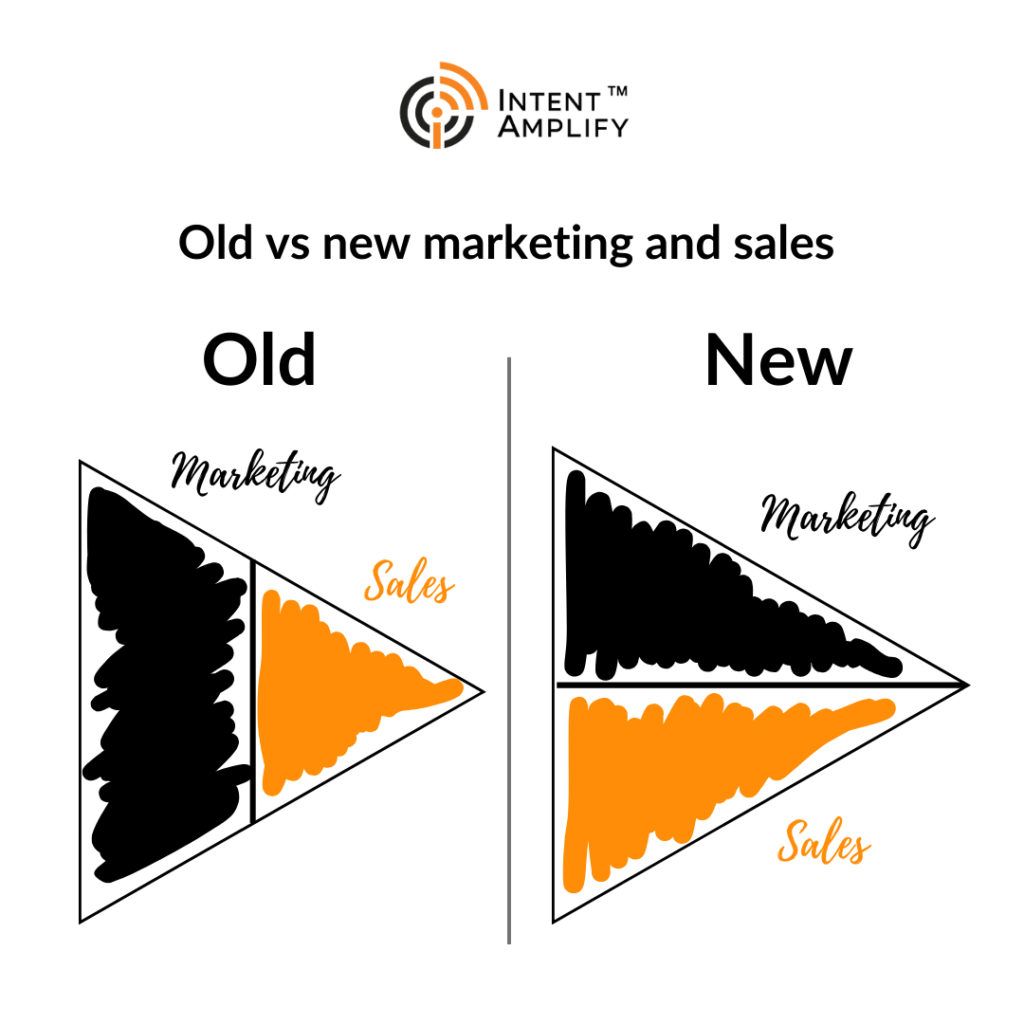
Sales & Marketing Alignment Fuels Your B2B Pipeline Health
- Last updated on: March 18, 2024
Marketing and sales teams depend greatly on each other to drive the business forward. Marketing generates leads, while sales convert those leads into paying customers. Despite this interdependence, it’s common for these two functions to operate in silos, each with its own systems and processes. Often, this results in a weakened B2B pipeline health, affecting the overall efficiency and effectiveness of the business.
In this article, we delve into the impact of sales and marketing collaboration on the B2B pipeline and offer practical advice and tools to streamline this collaboration effectively. Let us begin by understanding why siloed teams lead to poor sales pipeline health.

Negative Impacts of siloed teams on B2B pipeline health
- Unqualified Leads: Marketing might be generating a high volume of leads, but without clear communication with sales, they may not be targeting the right audience or capturing the right information. This results in unqualified leads – prospects who don’t meet your ideal customer profile. Sales then waste time chasing dead ends, and your pipeline stagnates.
- Slow Lead Nurturing: Effective lead nurturing requires a seamless handoff between marketing and sales. When siloed, marketing might nurture leads with generic content that doesn’t address sales-specific needs. This leaves leads unengaged and slows down the conversion process.
- Communication Gaps: Imagine sales promising features marketing never advertised! Confusion reigns when teams don’t share messaging and expectations. Leads get mixed signals, trust erodes, and opportunities fall through the cracks.
- Misaligned Metrics: Marketing focuses on lead generation metrics, while sales prioritize closing deals. This disconnect creates a misalignment of goals. Marketing might celebrate a high quantity of leads, but if they’re irrelevant to sales needs, it offers a false sense of achievement.
- Finger-Pointing & Blame Games: Without shared goals and clear communication, problems become a blame game. Sales blame marketing for poor lead quality, while marketing blames sales for not converting leads. This negativity further hampers collaboration and pipeline growth.
Getting your sales and marketing team on the same page
Aligning sales and marketing teams presents a huge opportunity not only for streamlining the B2B pipeline but also for improving business performance. In unison, they can dramatically improve returns on marketing investments, sales productivity, and overall growth. Since both teams have the same goal – driving sales and revenue — it is crucial to keep them in sync. A marketing team creating content with no clear objective for sales or conversions can potentially lead to major client disappointments and embarrassment for the company. On the other hand, aligning the sales and marketing teams leads to
Common problems and the solutions that aligning sales and marketing can present.
Problem 1: Sales and Marketing do not agree on the definition of qualified lead.
Solution: Take the time to align on goals, lead definition, and handoff process
According to a report by Marketo and ReachForce, sales representatives are ignoring a large number (80%) of the leads generated by marketing teams leading to wastage of valuable time and resources. Now the reason why this happens is because oftentimes, the quality of leads generated by the marketing team does not fit the definition of “qualified” with the sales team. So instead of spending their time on these “less likely to convert” leads, the sales reps spend their time focused on older leads.
By taking the time to collaborate and align, sales and marketing can fix these issues. They can agree on their goals for lead generation and conversion and focus on attracting and qualifying leads that fit the ideal customer profile.
While salespeople can spend their time on qualified leads with a higher chance of conversion, boosting their effectiveness, marketing can track the progress of nurtured leads and measure their success based on actual sales conversions. This will certainly lead to overall B2B pipeline improvement.
Problem 2: Misaligned marketing and sales strategies
Solution: Hold more team meetings together.
When both teams brainstorm together, it aligns their thoughts to work towards a common goal. This shared vision can be incredibly motivating and contribute to higher morale within the teams. Open communication and collaboration between sales and marketing break down silos, creating an environment built on mutual respect where each team understands the other’s challenges and contributions. It replaces finger-pointing and competition with a sense of camaraderie. When a qualified lead converts into a sale, it’s a victory for both departments.
Sales input on content creation helps marketing tailor materials that resonate with the target audience and address specific customer pain points. This leads to more qualified leads and higher conversion rates. Collaboration allows teams to identify and address bottlenecks in the sales funnel. This smooths the flow of qualified leads, resulting in a healthier and more productive pipeline that ultimately drives revenue growth.
Problem 3: Complicated workflows
Solution: Unifying tools and platforms to simplify communications.
Imagine two cooks in a restaurant kitchen.
Chef A: Uses a chaotic system: spices scattered everywhere, separate cutting boards for each dish.
Chef B: Uses a streamlined approach: labeled containers, and a shared prep station.
Outcome: The first cook wastes time searching and organizing, while the second gets right to work.
Simplifying alignment between sales and marketing is similar to the above example. Instead of having two separate dashboards for sales and marketing, both can use a common dashboard and tools, including customer engagement platforms. Result: ease of work.
Problem 4: The sales team relies on the marketing team’s help to shorten the sales cycle and go to market faster.
Solution: Working together to shorten the sales cycle.
Gone are the days of buyers readily engaging with sales reps. Today’s complex buying cycle involves a more informed and independent customer. Outbound calls and emails often fall on deaf ears, leaving traditional sales strategies in the dust.
To thrive in this new reality, sales and marketing need to join forces. They must work in sync to map the modern customer journey. This includes pinpointing ideal customer segments and crafting targeted approaches. High-quality, informative content will be the weapon of choice. By working together, they can create engaging materials that resonate with customer needs at every touchpoint.
By aligning our efforts on segmentation, content development, and customer engagement, we can shorten the sales cycle and close deals faster. This collaborative approach ensures both sales and marketing contribute to a winning formula in the ever-evolving B2B landscape.




